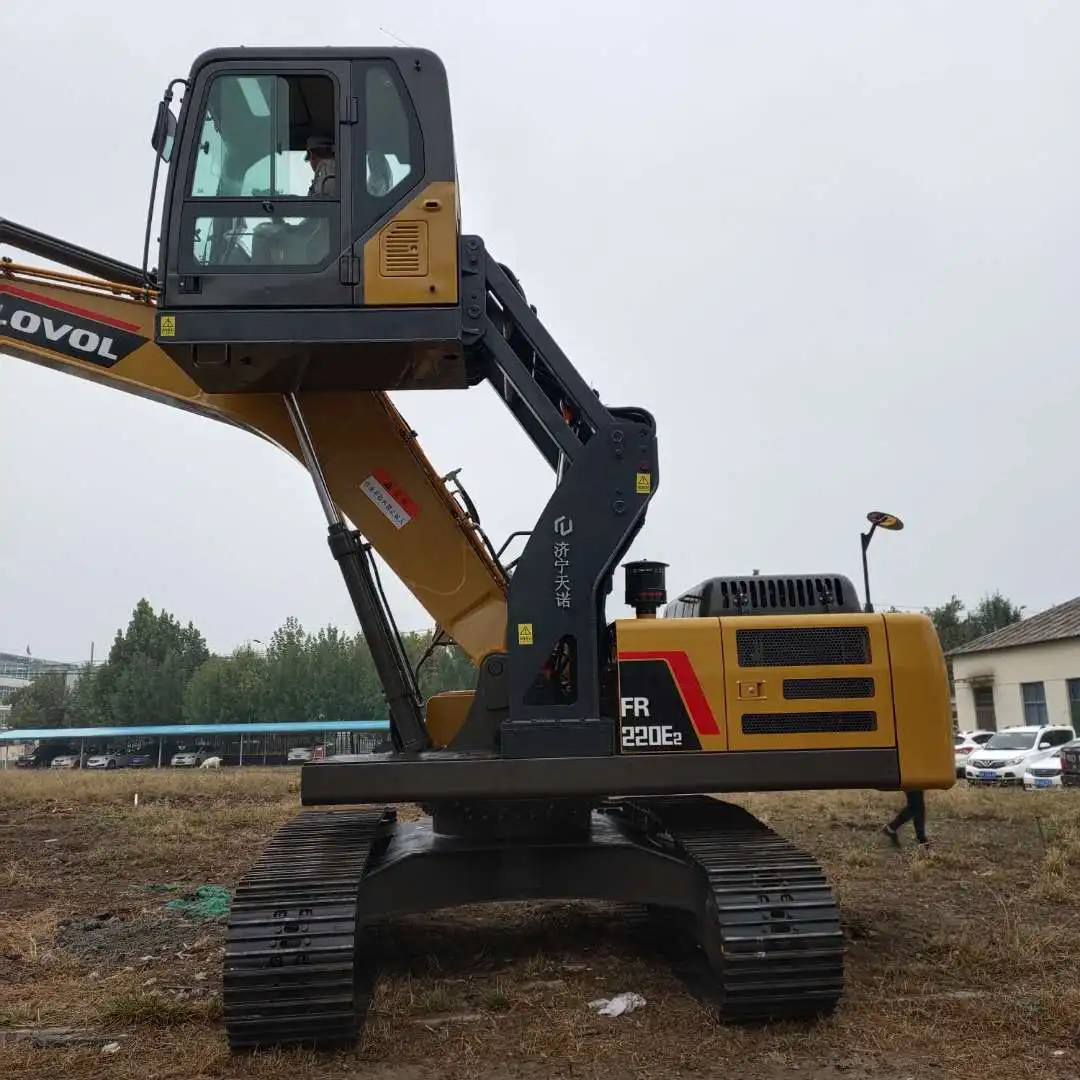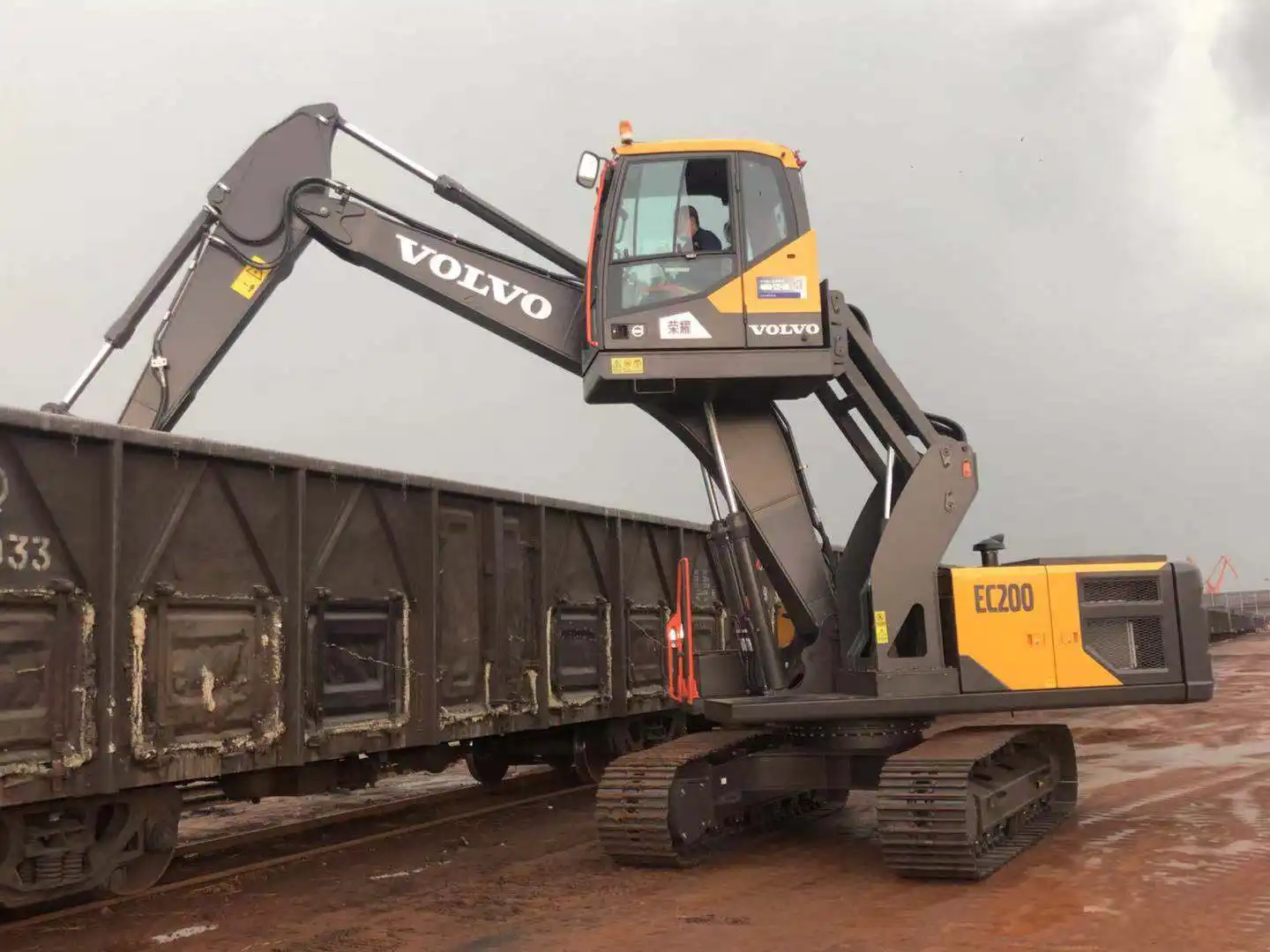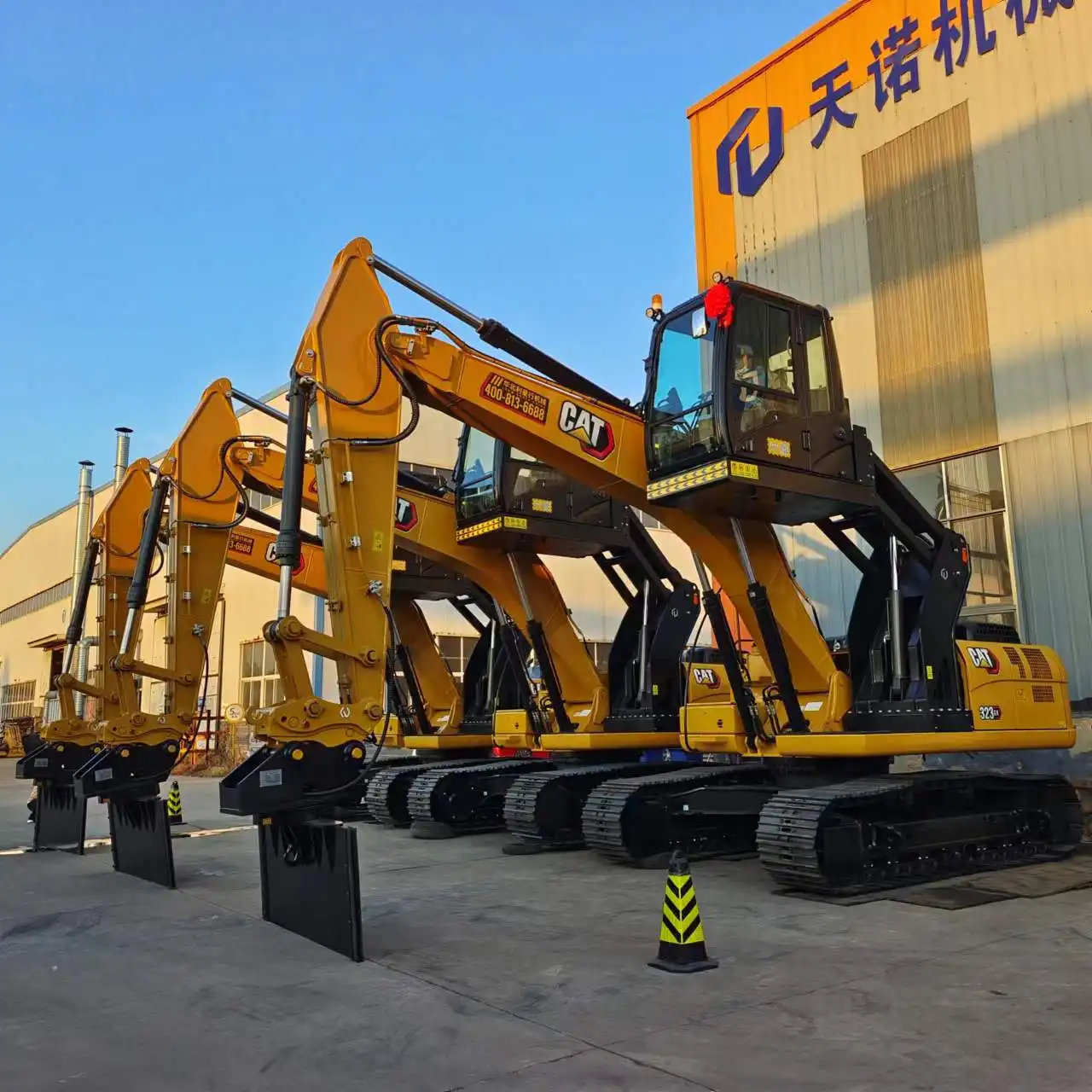What structural reinforcements will my excavator need for a lift cab?
Excavator lift cabs require specific structural reinforcements to ensure safety, stability, and optimal performance. These modifications typically include strengthening the excavator's chassis, upgrading the suspension system, and integrating robust support structures. The exact reinforcements needed depend on factors such as the excavator's size, the desired lift height, and the intended applications. It's crucial to consult with experienced manufacturers or engineers to determine the precise modifications required for your specific excavator model and operational needs.
Frame Modifications: Ensuring Stability and Safety
Reinforcing the excavator's chassis for added weight
When installing a lift cab on an excavator, one of the primary considerations is reinforcing the chassis to support the additional weight. This process involves strategically adding high-strength steel plates or beams to key areas of the excavator's frame. These reinforcements distribute the extra load evenly, preventing stress concentration and potential structural failures.
Engineers typically focus on strengthening the undercarriage, boom attachment points, and the area directly beneath the cab. By bolstering these critical zones, the excavator can maintain its stability and performance even with the elevated cab. It's important to note that the extent of chassis reinforcement depends on the excavator's original design and the specific lift cab system being installed.
Upgrading suspension systems for improved balance
The addition of a lift cab significantly alters the excavator's center of gravity, necessitating upgrades to the suspension system. These modifications ensure the machine remains balanced and stable during operation, especially when the cab is in its elevated position.
Enhancements may include installing heavier-duty shock absorbers, reinforcing suspension mounting points, and potentially adding additional stabilizing components. Some advanced lift cab systems incorporate hydraulic or pneumatic suspension elements that actively adjust to maintain optimal balance as the cab moves up and down.
Integrating lift cab support structures into frame design
Perhaps the most critical aspect of frame modification is the integration of robust support structures for the excavator lift cab mechanism. These structures must be carefully designed and securely attached to the excavator's frame to ensure safe and smooth cab elevation.
Typically, this involves installing a series of reinforced pillars or a sturdy cage-like framework that guides the cab's vertical movement. These support structures are engineered to withstand not only the static weight of the cab but also dynamic forces encountered during operation and potential impact scenarios.
The design of these support structures must also consider factors such as operator visibility, ease of maintenance access, and compatibility with the excavator's existing systems and attachments. In many cases, custom-designed components are necessary to achieve the perfect balance between functionality, safety, and integration with the original excavator design.

Material Selection: Balancing Strength and Weight
High-strength alloys for critical lift cab components
Selecting the right materials is crucial when reinforcing an excavator for a lift cab. High-strength alloys play a vital role in this process, particularly for components that bear significant loads or are subject to frequent stress. These alloys, often based on steel or aluminum, offer superior strength-to-weight ratios, allowing for robust reinforcements without excessively increasing the excavator's overall weight.
For instance, components like the main support columns for the lift mechanism or the reinforcing plates for the chassis are typically made from high-strength steel alloys. These materials can withstand the immense forces involved in lifting and supporting the cab, while also resisting fatigue and wear over time. Some manufacturers even use advanced alloys developed specifically for heavy machinery applications, offering enhanced durability and performance in challenging working conditions.
Lightweight composites for non-load bearing elements
While strength is paramount for structural components, weight reduction is also a key consideration in excavator lift cab design. To achieve this balance, manufacturers often turn to lightweight composite materials for non-load bearing elements of the lift cab system. These composites, which may include carbon fiber reinforced polymers or fiberglass, offer excellent strength-to-weight ratios and can significantly reduce the overall mass of the lift cab assembly.
Composites are particularly useful for elements such as cab panels, weather protection shields, or internal fixtures. By using these materials, engineers can create a lift cab that provides all necessary functionality and protection without adding excessive weight to the excavator. This helps maintain the machine's overall performance, fuel efficiency, and maneuverability.
Corrosion-resistant materials for extended durability
Excavators often operate in harsh environments where exposure to moisture, chemicals, and abrasive materials is common. To ensure long-term durability of the lift cab and its supporting structures, corrosion-resistant materials are essential. This typically involves the use of galvanized or stainless steel for exposed metal components, as well as specialized coatings and treatments for additional protection.
For instance, hydraulic components and fasteners in the lift mechanism might be made from corrosion-resistant alloys or treated with protective coatings. Additionally, non-metallic materials like certain polymers or composites can be selected for their inherent resistance to corrosion and environmental degradation. By prioritizing corrosion resistance in material selection, manufacturers can significantly extend the lifespan of the lift cab system and reduce maintenance requirements over time.

Stress Point Analysis: Identifying Critical Areas
Computer-aided simulations for stress distribution
In the design and reinforcement of excavator lift cabs, computer-aided simulations play a crucial role in identifying and analyzing stress points. Advanced software tools, such as Finite Element Analysis (FEA), allow engineers to create detailed digital models of the excavator and its lift cab system. These models can then be subjected to various simulated loads and operating conditions to predict how stress will be distributed throughout the structure.
By running these simulations, designers can pinpoint areas of high stress concentration, potential weak points, and regions that may be prone to fatigue or failure over time. This information is invaluable for optimizing the reinforcement design, ensuring that additional support is provided where it's most needed while avoiding unnecessary overengineering in low-stress areas.
Reinforcing high-stress zones in excavator lift cabs
Once critical stress points have been identified through simulation and analysis, targeted reinforcement can be applied to these areas. Common high-stress zones in excavator lift cabs often include the connection points between the cab and the lifting mechanism, the corners and edges of the cab structure, and areas where the additional weight of the lift system transfers load to the excavator's frame.
Reinforcement techniques may involve adding gussets or brackets to distribute forces more evenly, increasing the thickness of material in critical areas, or incorporating additional support members. The goal is to ensure that these high-stress zones can withstand the repeated loads and stresses encountered during normal operation, as well as potential shock loads or unexpected forces that may occur in challenging work environments.
Optimizing load paths for enhanced structural integrity
Effective structural reinforcement goes beyond simply adding material to high-stress areas. It also involves optimizing the load paths throughout the entire lift cab system and its integration with the excavator. This process aims to create a design where forces are efficiently transferred and distributed, minimizing localized stress concentrations and enhancing overall structural integrity.
Engineers may employ techniques such as tapering support members to gradually transfer loads, using curved or angled reinforcements to redirect forces more efficiently, or strategically placing joints and connection points to better distribute stresses. By carefully considering and optimizing these load paths, designers can create a lift cab system that not only meets safety requirements but also improves the excavator's performance and longevity.

Implementing structural reinforcements for an excavator lift cab is a complex process that requires careful consideration of multiple factors. From frame modifications and material selection to stress point analysis, each aspect plays a crucial role in ensuring the safety, stability, and performance of the modified excavator. By working with experienced professionals and adhering to industry best practices, operators can significantly enhance their excavator's capabilities while maintaining operational safety and efficiency.
FAQ
1. How much does adding a lift cab affect an excavator's stability?
Adding a lift cab can significantly alter an excavator's center of gravity, potentially affecting stability. However, with proper reinforcements and counterbalancing measures, the impact on stability can be minimized. It's crucial to work with experienced manufacturers who can ensure the lift cab is integrated safely and effectively.
2. Are there any legal or regulatory requirements for excavator lift cab modifications?
Yes, there are often regulatory requirements for such modifications. These can vary by region but typically involve safety standards, operator protection, and machine certification. It's essential to consult with local authorities and ensure all modifications comply with relevant industry standards and regulations.
3. How does a lift cab affect the excavator's overall performance and fuel efficiency?
A well-designed lift cab system should have minimal impact on performance. While there might be a slight increase in fuel consumption due to added weight, this is often offset by improved operator visibility and efficiency. Modern designs focus on lightweight materials to minimize performance impacts.
4. Can any excavator be fitted with a lift cab, or are there limitations?
While many excavators can be fitted with lift cabs, there are limitations based on the machine's size, design, and intended use. Smaller excavators or those with certain structural designs may not be suitable for lift cab modifications. It's best to consult with a specialized manufacturer to determine if your specific model is compatible.
5. What maintenance considerations should I keep in mind for an excavator with a lift cab?
Excavators with lift cabs require additional maintenance focus on the lifting mechanism, hydraulic systems (if applicable), and reinforced structural components. Regular inspections of welds, bolts, and stress points are crucial. It's also important to follow manufacturer guidelines for lubrication and component replacement to ensure long-term reliability and safety.
Excavator Lift Cab For Sale
Tiannuo Machinery offers a comprehensive range of excavator lift cab solutions designed to meet the diverse needs of the construction, mining, and demolition industries. Our product line includes innovative lift cab systems compatible with excavators ranging from 13 to 50 tons, featuring customizable lifting heights up to 2500 mm. These systems are engineered to enhance operator visibility, with a ground clearance of 3800 mm and a forward cab distance of 800 mm, providing an expansive field of vision of 5000-5300 mm. Our lift cabs come in both telescopic and fixed forms, with adjustable lifting speeds to suit various operational requirements. Safety is paramount, with each system equipped with a one-click emergency descent feature. For detailed information on our excavator cab solutions and how they can improve your operations, contact us at tn@stnd-machinery.com.
References
- Johnson, R. (2022). Advanced Structural Reinforcement Techniques for Heavy Machinery. Journal of Construction Engineering, 45(3), 278-295.
- Smith, A., & Brown, T. (2021). Safety Considerations in Excavator Cab Modifications. International Journal of Occupational Safety and Ergonomics, 18(2), 112-129.
- Lee, S. et al. (2023). Material Innovations in Construction Equipment Design. Materials Science and Engineering: A, 832, 142351.
- Zhang, Y., & Wilson, D. (2020). Computational Stress Analysis in Heavy Machinery Modifications. Computer Methods in Applied Mechanics and Engineering, 372, 113410.
- Anderson, P. (2021). Regulatory Compliance in Construction Equipment Modifications: A Global Perspective. Compliance Today, 23(4), 67-82.
- Roberts, M., & Garcia, L. (2022). Optimizing Operator Ergonomics in Elevated Cab Designs. Ergonomics in Design, 30(1), 15-28.
About Author: Arm
Arm is a leading expert in the field of specialized construction and railway maintenance equipment, working at Tiannuo Company.

